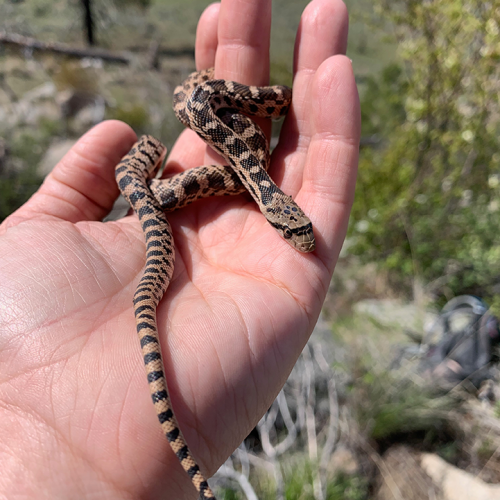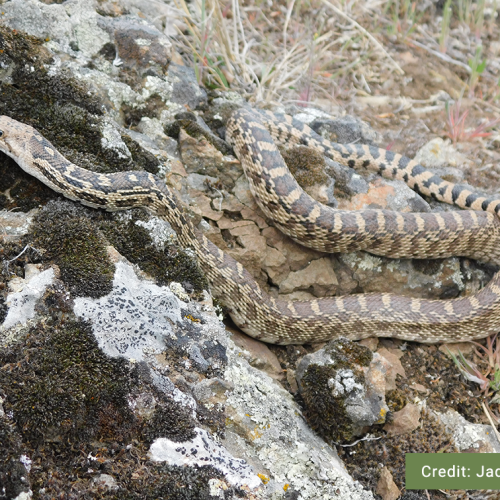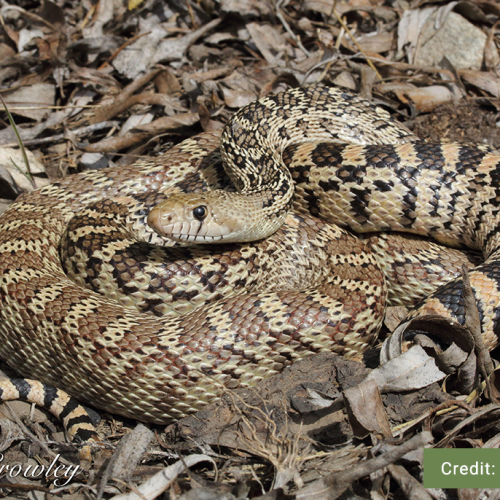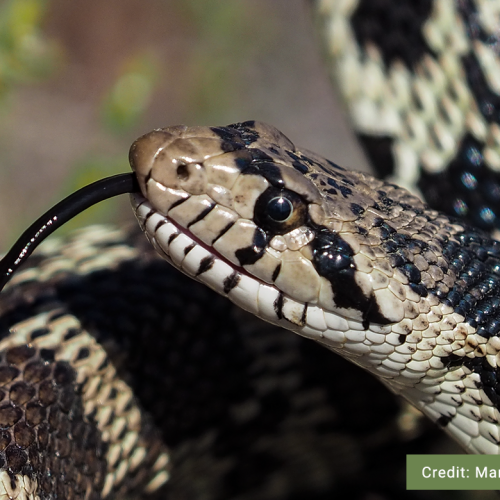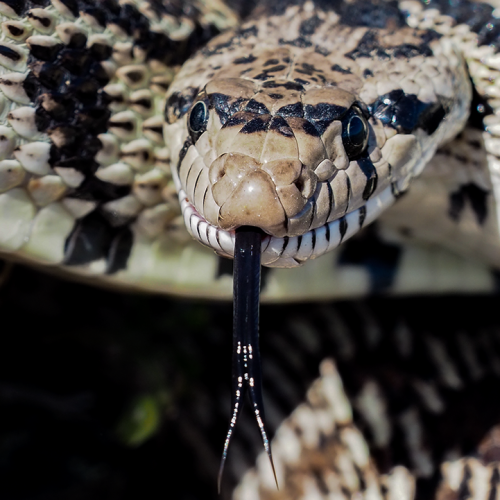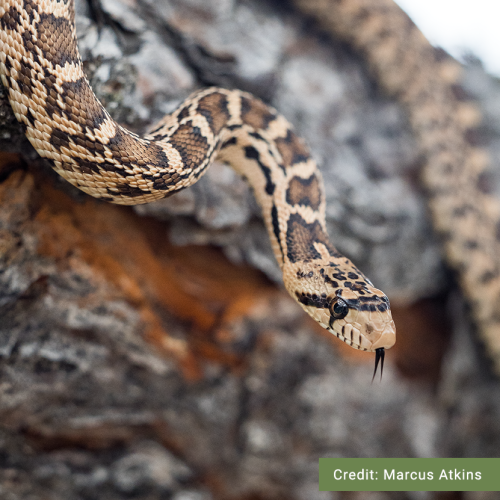Credit: Jade Spruyt
Great Basin Gophersnake
Pituophis catenifer deserticola
Description
Listen to the Indigenous words for “snake” here!
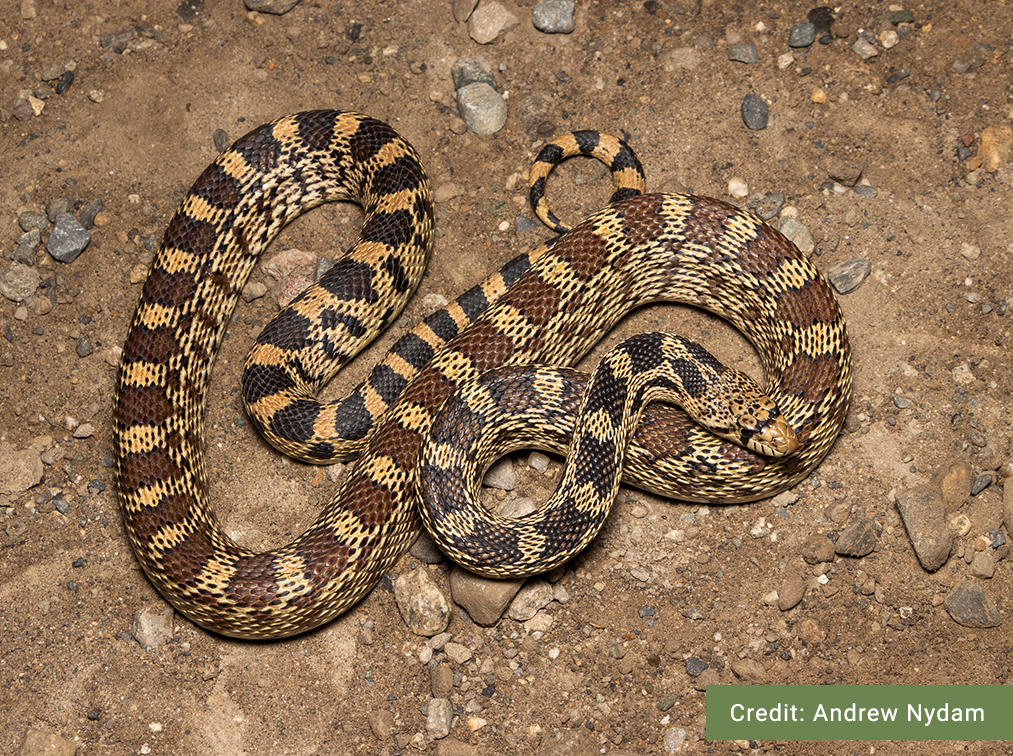
Similar Species
The Great Basin Gophersnake is often confused with the Western Rattlesnake. The two species may appear similar from a distance but upon closer inspection are really quite different. The Western Rattlesnake has a distinctly triangular head, vertical pupils, and the characteristic rattle at the tip of the tail. When threatened, Gophersnakes will flatten their head, hiss loudly, and vibrate their tail, creating a convincing rattlesnake imitation. Rattlesnakes however, almost never hiss, and will produce an audible and distinct buzzing sound from their rattle that cannot be imitated by a Gophersnake. Small or juvenile Gophersnakes may also be confused with the Desert Nightsnake, although the Nightsnake has vertical pupils, a distinct dark collar at the base of the head, and is a very rare sighting in British Columbia.

Great Basin Gophersnake
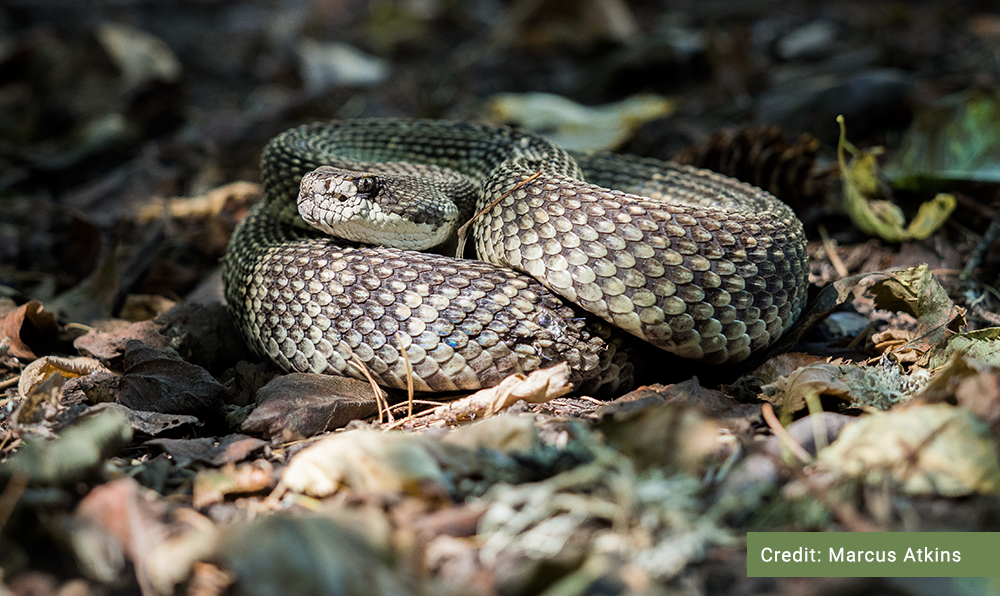
Western Rattlesnake

Desert Nightsnake
Distribution
The Great Basin Gophersnake (Pituophis catenifer deserticola) is the only extant subspecies in British Columbia. The Pacific Gophersnake (Pituohpis catenifer catenifer) is now considered extirpated in B.C. The Bullsnake (Pituophis catenifer savi) is often misidentified as the Great Basin Gophersnake, but is only found east of the Rockies in Alberta and Saskatchewan.
Habitat

Reproduction
Great Basin Gophersnakes mate in the early spring shortly after they emerge from their overwintering dens. Males court prospective mates by lining their bodies up with a female, often biting them on the back of the neck. Gophersnakes are oviparousDefinition:A reproductive strategy where eggs develop and hatch inside the mother’s body, with the young feeding off the yolk sac until shortly after birth., laying 2-8 eggs in mid-summer, often communally with other Gophersnakes. Hatchlings emerge a few weeks later in late summer, and usually still have yolk attached to them, which is an important food source as most neonatalDefinition:A newborn. Gophersnakes will not eat before entering hibernationDefinition:Term to describe a period of dormancy in animals, usually as a response to low external temperatures during which most metabolic processes are slowed, including respiration and thermoregulations.. Gophersnake nest sites are often too far away from overwintering hibernaculaDefinition:Winter dwelling of a hibernating animal. for neonatal individuals to travel, leaving hatchlings to find old rodent burrows or rocky crevices near their birth site to overwinter in. Male Gophersnakes reach sexual maturity after a year or two, while females do not reach sexual maturity for 3-5 years and will only reproduce every other year. Great Basin Gophersnakes may live for more than 30 years.
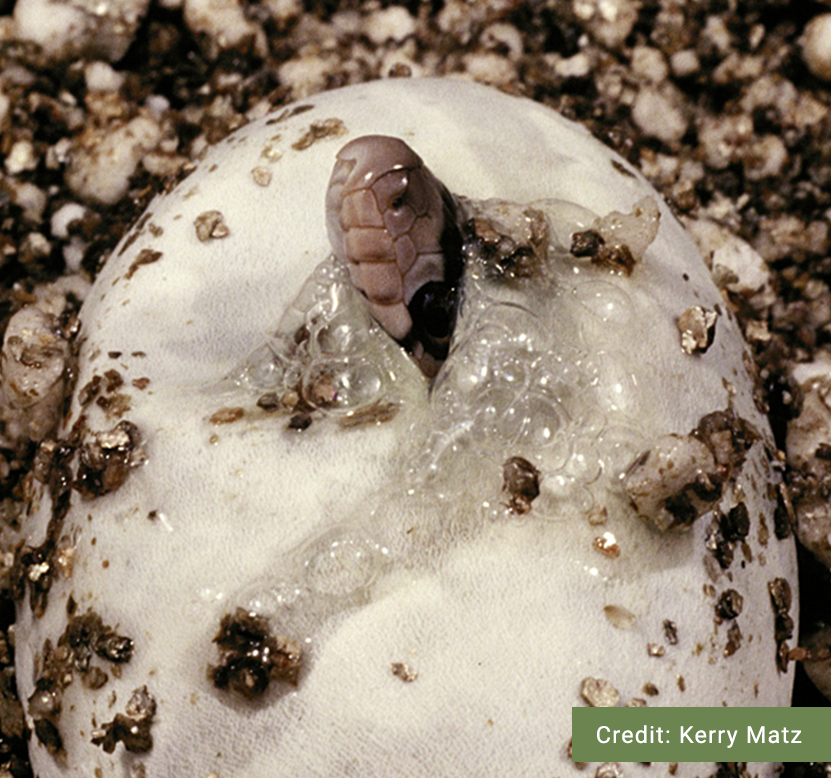
Diet
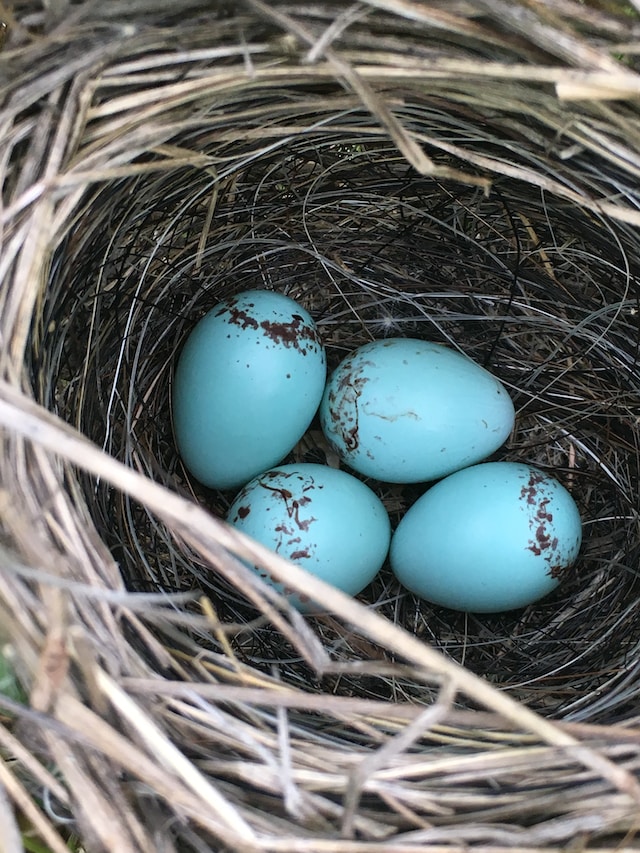
Conservation Status
Global: G5T5 (2016)
COSEWIC: T
SARA:1-T (2005)
Provincial: S3 (2018)
BC List: Blue
Learn more about conservation status rankings here
Threats
Did You Know?
Fact #1
Fact #2
Fact #3
Photo: iNaturalist
Species Account Author: Marcus Atkins
B.C. Conservation Data Centre. Species Summary: Pituophis catenifer deserticola. B.C. Minist. of Environment. Available: https://a100.gov.bc.ca/pub/eswp/ (accessed Jun 18, 2021).
B.C. Conservation Data Centre. 2018. Conservation Status Report: Pituophis catenifer deserticola. B.C. Minist. of Environment. Available: https://a100.gov.bc.ca/pub/eswp/ (accessed Jun 18, 2021).
B.C. Conservation Data Centre. 2021. BC Species and Ecosystems Explorer. B.C. Minist. of Environ. Victoria, B.C. Available: https://a100.gov.bc.ca/pub/eswp/ (accessed Jun 18, 2021).
COSEWIC. 2013l. COSEWIC assessment and status report on the Great Basin Gophersnake Pituophis catenifer deserticola in Canada. Committee on the Status of Endangered Wildlife in Canada. Ottawa. xii + 53 pp.
Environment and Climate Change Canada. 2019e. Recovery Strategy for the Western Rattlesnake (Crotalus oreganus), the Great Basin Gophersnake (Pituophis catenifer deserticola) and the Desert Nightsnake (Hypsiglena chlorophaea) in Canada. Species at Risk Act Recovery Strategy Series. Environment and Climate Change Canada, Ottawa. Part 1, 28 pp., Part 2, A. 37 pp., B. 36 pp., C. 28 pp.
Shewchuk, C.H., and H.L. Waye. 1995a. Status report for the Gophersnake in British Columbia. Unpubl. rep., B.C. Minist. Environ., Lands and Parks, Wildl. Branch, Victoria.
Southern Interior Reptile and Amphibian Working Group. 2016c. Recovery plan for the Gophersnake, deserticola subspecies (Pituophis catenifer deserticola) in British Columbia. Prepared for the B.C. Ministry of Environment, Victoria, BC. 36 pp.
http://www.canadianherpetology.ca/species/species_page.html?cname=Great%20Basin%20Gophersnake
http://linnet.geog.ubc.ca/efauna/Atlas/Atlas.aspx?sciname=Pituophis%20catenifer%20deserticola
https://www.bcreptiles.ca/snakes/grtbasingopher.htm


